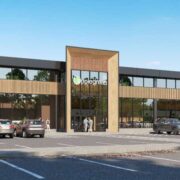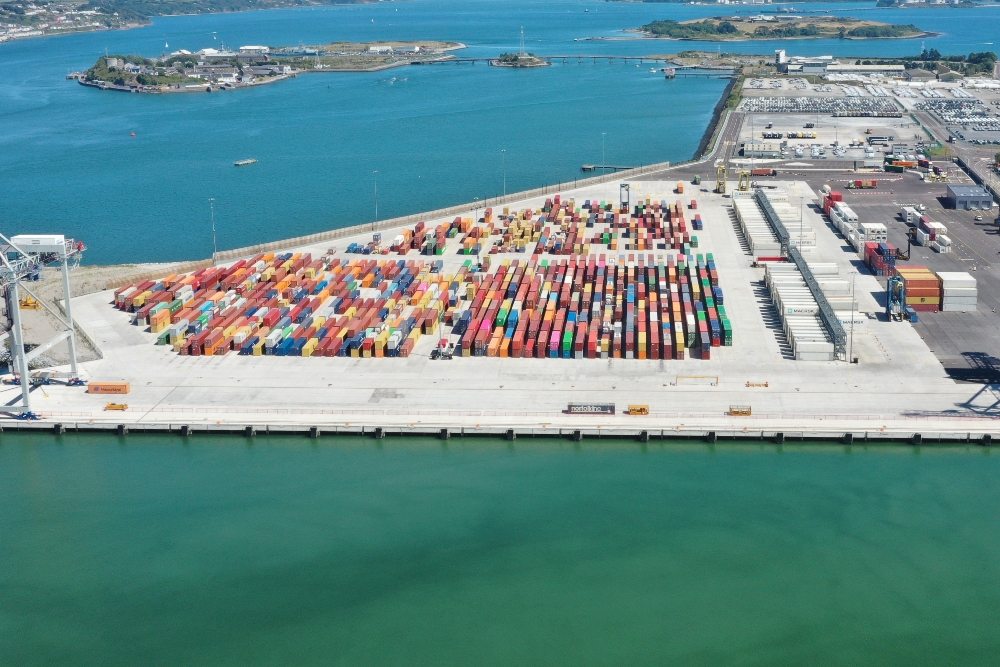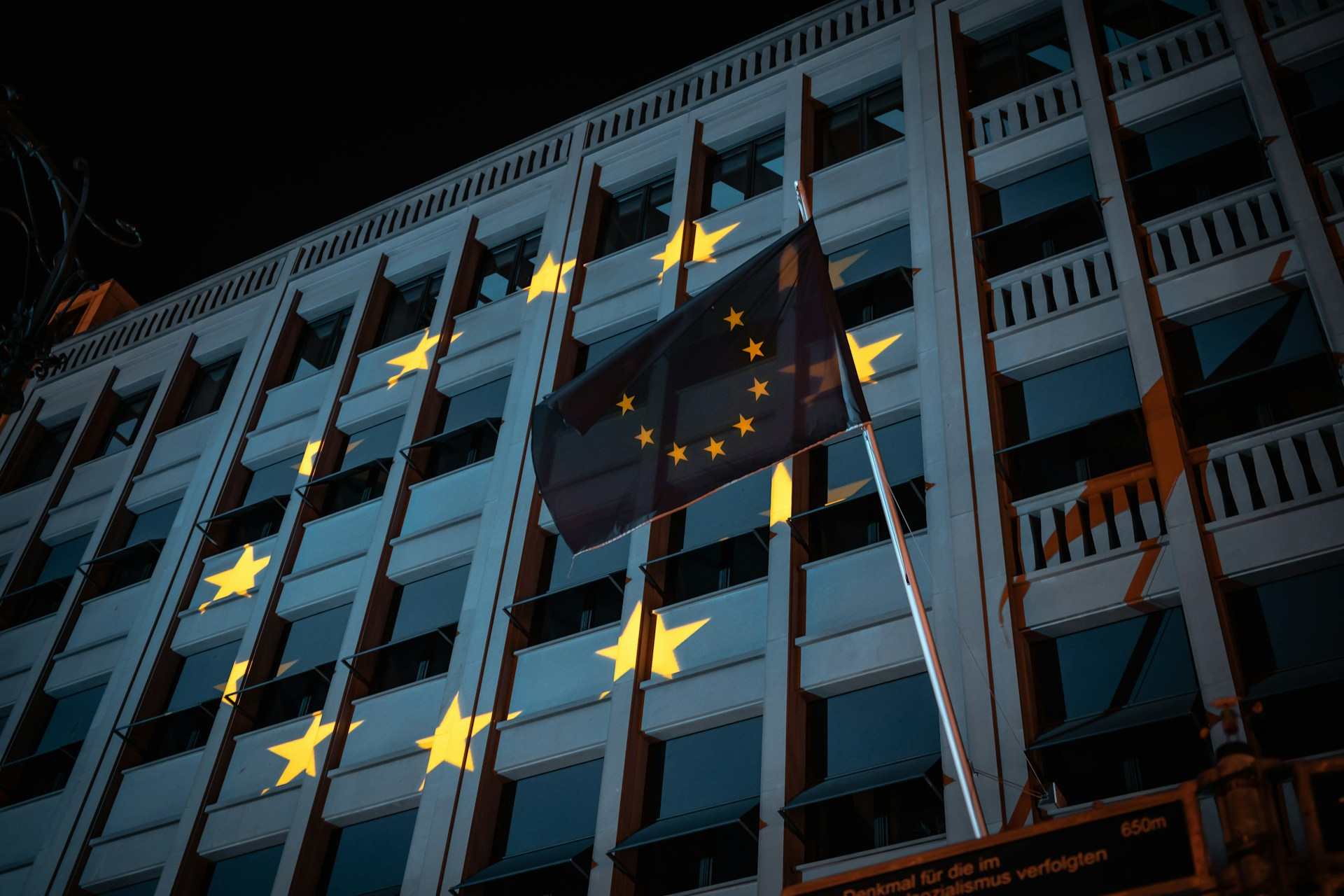Bank of Ireland chief economist Conall Mac Coille and head of Manufacturing sector Conor Magee told a webinar about the EU-US tariffs deal that Ireland is facing the tariff headwinds with resilience and realism.
As global trade tensions escalate, Ireland’s economic outlook remains cautiously optimistic, according to insights shared during a webinar this morning (1 August) on the implications of US tariffs.
The Bank of Ireland webinar led by Mac Coille and Magee entitled “Tariffs – What’s Next”, explored the potential impact of a 15% tariff on Irish exports, particularly in the pharmaceutical and tech sectors, and examined broader economic trends shaping the country’s future.
“The actual level of construction of infrastructure, civil engineering activity, utilities, water, electricity, has been stagnant over the past four or five years. We really need to be pushing on with the delivery of infrastructure”
Mac Coille said that while exports have been revised downwards due to the tariffs, the impact on Irish GDP is expected to be minimal unless production volumes fall. The threat of the US Section 899 has been removed, possibly reducing the foreign direct investment (FDI) risk to Ireland.
However, on the FDI front high risks remain due to the high concentration of multinational giants with 10 firms alone accounting for 50% of tax receipts. Not only that, there is still the spectre of multinationals restructuring in the face of the new global trade landscape.
He said that the EU is perceived to have negotiated poorly with the US compared to the UK and that there are no reciprocal EU tariffs currently in place, raising concerns over the EU’s bargaining power and lack of leverage, especially in crucial areas like tech services.
Pharmaceuticals: A buffer against tariff shocks?
Mac Coille highlighted the limited exposure of Irish exports to the new tariffs. “As little as €15bn of non-pharmaceutical goods exports are going to be affected by this 15% tariff,” he said. “That’s clearly a very difficult adjustment for those companies involved, but it is a very small portion of our overall exports of €809bn last year.”
He emphasised the resilience of the pharmaceutical sector, noting its low price elasticity. “Because Americans have to have their medicines or the medical devices, they’re far more likely to bear the cost of these tariffs,” he explained. “Pharmaceutical companies are unlikely to raise their prices, and because they’re not going to receive much of a hit to their volumes.”
Mac Coille added that the defensive, non-discretionary nature of pharmaceutical exports means the burden of adjustment is likely to fall on US consumers, not Irish GDP. “It takes maybe five, six, seven, eight years to set up a pharmaceutical plant from scratch. So this production can’t move quickly out of Ireland.”
Corporation tax and FDI: Watching the winds
The conversation turned to corporate tax and foreign direct investment Mac Coille addressed concerns about Section 899, a US tax provision that had threatened to impose withholding taxes on foreign investors.
“That’s a risk which has kind of gone away,” he said, noting its removal from the One Big Beautiful Bill Act.
However, he cautioned that Ireland’s corporate tax base remains vulnerable. “Ten companies account for over 50% of corporate taxes. There’s plenty of risk there,” he said. “Some of these corporate taxes could move away very, very quickly if we did see some of those transfer pricing arrangements restructured.”
Economic momentum
Despite external pressures, Ireland’s economy has shown surprising strength. “Public expenditure grew by 8% in the first half of 2025. Consumer spending is growing faster than we initially thought, by around 3% at the moment,” Mac Coille reported. Employment grew by 3.3% in the year to Q1.
Looking ahead, he predicted a slowdown in employment growth to 1.5% in 2026. “The capacity, given constraints and bottlenecks in the economy, are going to be eventually felt,” he said.
Housing and infrastructure: A growing deficit
Mac Coille pointed to housing and infrastructure as critical pressure points. “Employment over the past six years is actually at 20 percent, which is a faster pace than we saw during the Celtic Tiger period,” he said. “Over 50 percent of jobs created over the past two or three years have come from net migration.”
He noted that Ireland’s housing stock relative to population is among the lowest in Europe. “We’ve looked at the planning permission state, particularly apartments, and you can see those being squeezed over the past 12 months.”
On infrastructure, he was blunt. “The actual level of construction of infrastructure, civil engineering activity, utilities, water, electricity, has been stagnant over the past four or five years,” he said. “We really need to be pushing on with the delivery of infrastructure.”
The construction sector faces a dual challenge of labour shortages and low productivity. “There’s been various estimates that we need maybe 50,000 to 70,000 extra construction workers to deliver the NDP,” Mac Coille said. “We don’t have these large-scale home builders to deliver the NDP and home building.”
He added that Irish construction productivity is about one-third lower than the EU average. “Slow adoption of things like modern methods for construction are maybe holding us back from delivering housing and infrastructure.”
Practical steps for businesses
On the EU-US trade deal, Mac Coille expressed disappointment in the outcome. “It’s very hard to look at the deal in any kind of positive light,” he said. “The United Kingdom has got a better deal than the EU.”
He questioned the EU’s negotiating strength. “There’s already an exchange of views between the member states and the Commission around who didn’t bargain effectively or undermined the EU’s position.”
Conor Magee shared practical advice for firms navigating the new tariff landscape. “The clients I’m speaking to are very active engaging with the Harmonised Tariff Schedule,” he said. “They’re speaking to their US customers to agree what the most effective tariff level is.”
He encouraged companies to explore component-level tariffs. “It sounds counterintuitive, but when you do the numbers, it can yield a lower effective tariff.”
Mac Coille concluded with a note of realism. “We only have three and a half years of the Trump presidency to go,” he said. “But I think if we don’t take action now, the bigger risk to the Irish Government is the infrastructure deficits and the lack of delivery there.”
The webinar closed with a reminder that while tariffs pose a challenge, Ireland’s economic fundamentals remain strong. The focus now shifts to strategic investment, policy agility, and long-term resilience.
-
Bank of Ireland is welcoming new customers every day – funding investments, working capital and expansions across multiple sectors. To learn more, click here
-
For support in challenging times, click here
-
Listen to the ThinkBusiness Podcast for business insights and inspiration. All episodes are here. You can also listen to the Podcast on:
-
Spotify
-
SoundCloud
-
Apple






